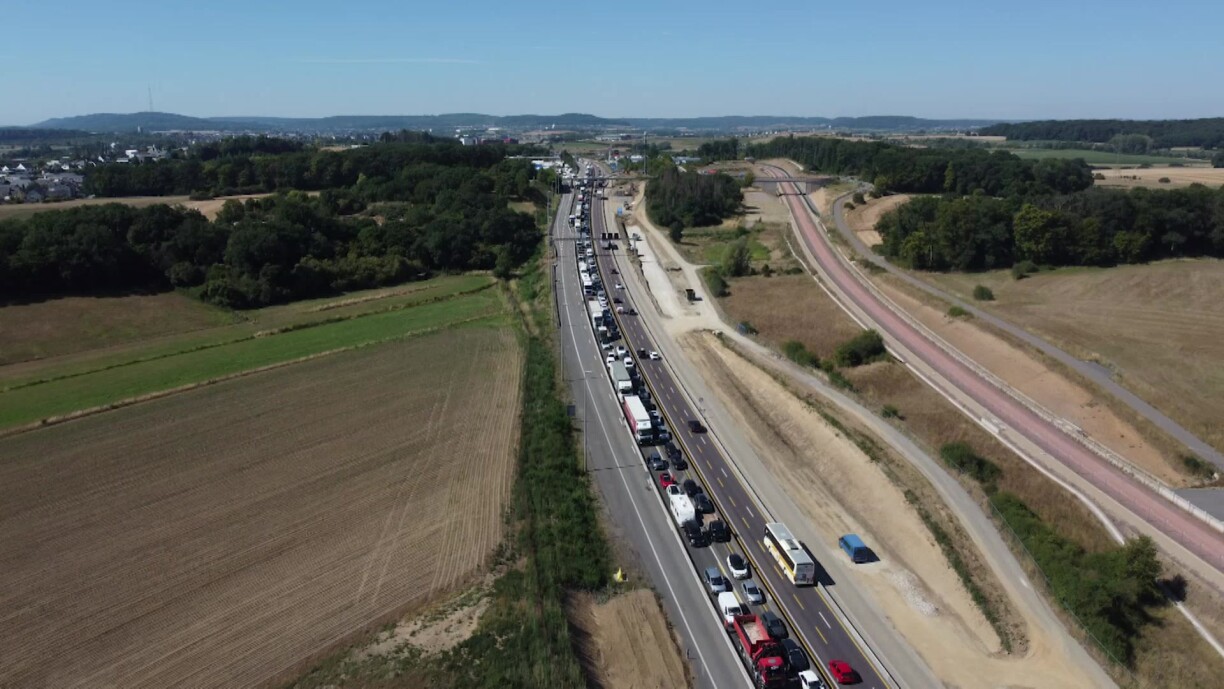
You all know the situation: you are sitting in the car and suddenly there is a traffic jam, most often because of an accident or because some drivers are not paying attention.
As motorists, people must remain aware that they are driving and need to be vigilant in order not to endanger themselves or others. But how can jams and accidents be reduced, and what can each person contribute to making the roads safer?
There are constant complaints about the state of the roads, with many things not working as they should. The result is accidents and traffic jams almost every day. The causes are often trivial: just one second of inattention and it happens.
We went inside Luxembourg’s traffic control centre, where everything is monitored and where the traffic lights are managed and adjusted to keep vehicles moving. Behind this lies an a scientific approach, based on statistics, timing, and observation. Yet what works in theory does not always translate into practice, because the human factor is unpredictable.
The consequences are obvious: traffic stalls and nothing moves. But who is really to blame? Beyond speed, alcohol, and mobile phone use, which remain the main causes of serious accidents, the number of non-fatal collisions rose last year to 1,144 incidents. As for jams in the city centre, these are not caused by poorly timed traffic lights, as the lights are constantly adapted to the situation.
Looking at drivers waiting at a red light, one thing is clear: very few are ready to go as soon as the light turns green. They set off so slowly that it takes far too long to reach 50 km/h. No wonder traffic stalls and jams form, and jams often lead to accidents, just as accidents often cause jams. Even though the number of traffic fatalities has decreased on Luxembourg’s roads, the number of collisions has risen. The main causes remain the same as before, with one modern factor added that has already cost lives: the mobile phone.
Although everyone must learn the rules of the road to obtain a driving licence, many of these basics seem to be forgotten over time. Driving instructors still encounter shocking behaviour, such as learner drivers pulling out their phone in class. Besides the well-known causes, many accidents also come from ignoring fundamental rules.
Take motorway slip roads for example: today, many cars barely reach 70 km/h before the lane ends. This creates dangerous situations when vehicles approach from behind at 90 km/h out of a tunnel. If they cannot change lanes because the overtaking lane is full, everyone has to brake sharply, raising the risk of accidents. Drivers who fail to keep to the required speed not only slow down traffic but also trigger risky overtaking manoeuvres from those behind them.
And as obvious as it seems, indicators and rear or side mirrors appear to be optional extras for many. Between 10 and 15 percent of drivers admit they regularly forget to use them.
In short, there are five basic rules from the Highway Code that, if consistently followed by all drivers, would significantly reduce both traffic jams and accidents: always use your indicators, always check your rear-view and side mirrors, move off promptly when the traffic light turns green, accelerate properly on a slip road, and drive at the permitted speed. Unfortunately, these simple rules are not trending on social media. If they were, they would probably already be widely followed.